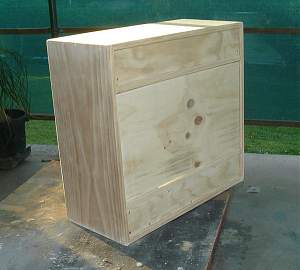I built this today, I didn't have a plan. Plans are for people who know what they are doing!
So yes , it is big for a 1x12 . The back can be either open or closed back and there is space inside for a 6m speaker lead and and Orange Micro TerrorNot that it's going in there but the space is there oh no, that's going on the pedal board that I also don't have a plan for but I may put a little shelf in there for it.
So I just need to finish off the speaker hole (its a bit wobbly) and do some filling and my favourite thing of all SANDING!
Then stain and clear coat (satin). Going to try the printing onto grease proof paper thing for some logo's on the front panel. I have black hessian for the front. It will end up looking like a perfect match for my GD-1
oh speaker is 8ohm Celestion Greenback









 Reply With Quote
Reply With Quote




 I prefer it closed to keep the dam gecko's out
I prefer it closed to keep the dam gecko's out